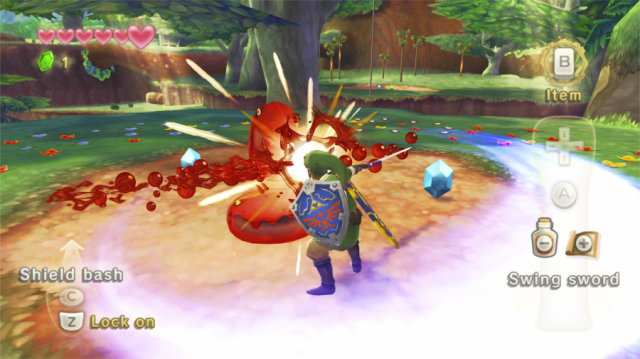Skyward Sword and Skill Scaling
Posted on March 01 2013 by Legacy Staff
 Let’s talk about Skyward Sword.
Let’s talk about Skyward Sword.
I’ve been fairly vocal in the past about my gripes with this game, and while as a whole I will continue to insist that it is not a bad game, and is in fact a good one, I will also insist that it is one of the weaker titles in the series. Today, we’re going to discuss why I hold this opinion: poor skill scaling. Before we discuss how Skyward Sword specifically suffers from this, we need to discuss the game theory behind the concept.
The term “skill scaling,” in this context, refers to the way in which the game’s design allows the player’s power to scale with their skill. A minimally skilled player – for instance, one unfamiliar with the Zelda series – should be respectably powerful, enough to complete the game with some difficulty. A significantly skilled player, however, should feel more powerful, as their additional skill level should allow them to execute more difficult strategies with a stronger payout, thus completing the game’s challenges with tremendous ease. This relationship between relative skill and relative power is a delicate one, and it should make players feel that they are becoming considerably more powerful as they become more skillful.
The difficult part of designing a game with good skill scaling is the introduction of various techniques in such a way that it fosters skill growth. Players need some technique early on in the game that offers a relatively high degree of power while requiring a low amount of skill to execute. This ensures that, regardless of how skilled the player is at the start of the game, they will be able to progress rather than meeting a brick wall early on. The trick is that this early technique must eventually become much weaker than other techniques that are available to the player. In doing this, the designers ensure that, as the player’s initial technique grows weaker relative to the other techniques in their arsenal, the player will gravitate toward the stronger techniques that require more skill to execute, and thus develop their skill throughout the game. This will only happen, however, if these more difficult techniques are significantly more powerful than the initial technique. Otherwise, the player’s skill never increases: they continue to use this initial technique throughout the game, never learning to use any of the more difficult yet more powerful ones.
The initial technique is called a “sub-optimal dominant strategy”: dominant strategy because it’s the technique with the greatest output of power relative to the required skill, and “sub-optimal” because later techniques provide greater outputs of power despite their greater skill requirements. The danger of skill scaling is when the sub-optimal dominant strategy becomes a straight up dominant strategy – a technique that is sufficiently powerful and requires little skill to execute that, even in the presence of more powerful techniques, it is more efficient for the player to use the dominant strategy in all situations.
For example, take the popular real-time strategy game StarCraft. One of the most well-known strategies in the game – one that has managed to seep into pop culture in general – is the Zerg rush. The Zerg rush is a strategy involving a Zerg player constructing a large number of relatively cheap units called Zerglings, and “rushing” an opponent’s base very quickly, before they’ve had time to assemble a formidable defense. Against new players, this strategy is highly effective, and from time-to-time can even catch experienced players off guard. The catch, however, is that a failed Zerg rush leaves the player open to counterattack. There exist many other strategies that do not have this handicap, and which are far more effective at swiftly destroying an opponent. Those strategies, however, are far more difficult to execute than a Zerg rush. For a player just starting out in StarCraft, a Zerg rush is an effective, simple strategy that allows them to be competitive despite their relatively low skill level. As they become more experienced, however, the handicaps of the strategy will force them to experiment with new strategies that, while more difficult to execute, are far more powerful. This is an example of good skill scaling.
In summation: skill scaling ensures that players of all skill levels will feel powerful as they advance through the game, while also ensuring that they will grow and become more skillful as they use more difficult yet more effective strategies. Poor skill scaling occurs when the initial sub-optimal dominant strategy fails to be sub-optimal, and becomes the best strategy to use in every situation throughout the game. Got it? Great – now let’s talk about Skyward Sword.
There are two specific areas in which Skyward Sword exhibits poor skill scaling: combat and exploration. Both suffer from the presence of a dominant strategy that impairs skill growth in players, while also creating unique unintended consequences in each area.
Swordplay and Combat
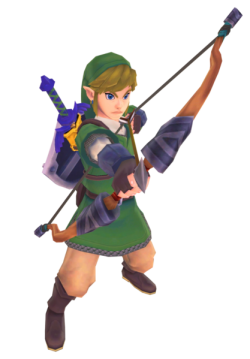 I am of the (perhaps controversial) opinion that combat in the Zelda series has always been rather lacking and a bit monotonous. I’ve never been necessarily bored by combat, but it has always been the least engaging aspect of the series. Skyward Sword, perhaps more than previous games in the series, stresses combat heavily in large part due to the addition of the Wii Motion Plus controls, which enable more precise swordplay than was previously possible. However, the emphasis on this new method of controls resulted quite unfortunately in the emergence of a dominant strategy in the game’s combat system.
I am of the (perhaps controversial) opinion that combat in the Zelda series has always been rather lacking and a bit monotonous. I’ve never been necessarily bored by combat, but it has always been the least engaging aspect of the series. Skyward Sword, perhaps more than previous games in the series, stresses combat heavily in large part due to the addition of the Wii Motion Plus controls, which enable more precise swordplay than was previously possible. However, the emphasis on this new method of controls resulted quite unfortunately in the emergence of a dominant strategy in the game’s combat system.
To an extent this is understandable: the game was exhibiting a new technology, after all, and it wanted to put its best foot forward, so to speak. But by designing the majority of enemies to be easily combatted with a timed directional swing, the game’s combat system is robbed of variety and skill growth. Players become better at executing that tactic, sure – enemies like the Lizalfos and Stalfos present new twists on that strategy, due to their speed and more advanced guarding abilities – but rarely venture outside of that strategy. There are multiple ways to kill most every enemy in the game, but in almost every instance it is more effective to swing your sword than to pull out your bombs or bow and take them out using Link’s fairly wide arsenal of weaponry and items. This is as much a fault of the simplicity of the swordplay as it is of the complexity of the other weaponry, such as the redesigned Bow.
For example, let’s examine Twilight Princess’ Bokoblin enemies and compare them to Skyward Sword’s Bokoblin enemies. In both cases, the enemies are defeated with a few sword swings. In this, the two games are very much alike: it is almost always easier to dispatch the Bokoblins with well-timed sword swings (and in the case of Skyward Sword, well-placed swings). What makes the swordplay in Skyward Sword a dominant strategy but the swordplay of Twilight Princess a sub-optimal dominant strategy is the function of the Bow. In Twilight Princess, the Bow had a quick draw time and always had the same damage upon impact. A player that was a skilled marksman could dispatch a Bokoblin with a single well-aimed shot that took an average of three seconds to setup and fire. In Skyward Sword, however, the Bow’s function is very different: it takes time to charge up a fully powered shot. This simple difference – the addition of a charge up time to the Bow – results in the change from a sub-optimal dominant strategy to a dominant strategy. In the time it takes the player to charge a shot, the Bokoblin can bash them with their club and interrupt the shot. In the same amount of time, the player could slash the Bokoblin with their sword and stagger them long enough to land another blow. The swordplay is far more effective than the Bow, because the amount of skill required to use it is much lower and offers a smaller chance of failure.
There’s an argument that could be made for enemy placement altering the strategies necessary for defeating them – for example, Bokoblins on a narrow bridge, limiting the slashing motion of the sword due to the narrow quarters – but the game manages to compensate for that fairly well within the swordplay with moves like the thrust and vertical slice. Nevertheless, in these situations, swordplay is far less dominant due to the constraints placed upon the slash arcs. Other methods are often far more effective in these situations, and when they appear it’s a good way for the game to place an incentive upon using the rest of Link’s arsenal. The issue is that the game doesn’t use them very often – I can scarcely recall more than a handful of instances of this throughout the entire game – and they are often short lived. It’s a challenge for developers to have to construct environmental constraints on the dominant strategy, so they don’t appear particularly often, and as such do not significantly affect the scope of the game’s combat overall.
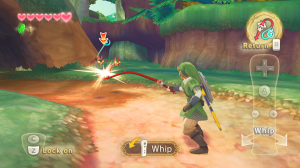 In addition to the presence of a dominant strategy, the game does little to incentivize players to use other techniques in combat. To continue with the Bow example, using the Bow on a Bokoblin offers no tangible benefit over using the sword on a Bokoblin. The outcome is the same in both situations, so the player has absolutely no reason to use a less effective tactic. Were the game to incentivize using this more difficult tactic, it would encourage the player to practice and develop their skills by using this tactic in order to reap the benefit. For example, in Majora’s Mask, shooting a Blue Bubble with a Light Arrow caused it to explode in a neat display of lights, and yielded a Purple Rupee (equivalent to 50 Rupees). Due to the speed of Blue Bubbles and the brief draw and charge time associated with using a Light Arrow, this tactic was slightly dangerous when used in close quarters, and was much less effective than firing a single, non-magical arrow, which would also kill the Bubble in less time and without the cost of Magic Power. But the game incentivized the use of a Light Arrow by providing a monetary award and an aesthetically interesting death animation. Note that this is not a significant reward – it is insignificant enough that the player could easily opt for the simpler option and then continue on, not feeling as if anything of tremendous value was lost – but it is enough of a reward that the player will feel as if their additional risk was worth it. Even something as small as the player thinking “oh that was cool” will work to encourage them to use more skillful tactics. To its credit, Skyward Sword features a number of this moments as well – of particular note are the Deku Babas swallowing bombs in a particularly animated fashion before their inevitable demise – however the lack of a tangible reward makes this somewhat less compelling, and the swallowing of the bomb can be considered to be roughly on par with the sword slice death animation; in the case of the Blue Bubble, the standard animation is very simplistic, as opposed to the more flamboyant explosion of light that the Light Arrows yield.
In addition to the presence of a dominant strategy, the game does little to incentivize players to use other techniques in combat. To continue with the Bow example, using the Bow on a Bokoblin offers no tangible benefit over using the sword on a Bokoblin. The outcome is the same in both situations, so the player has absolutely no reason to use a less effective tactic. Were the game to incentivize using this more difficult tactic, it would encourage the player to practice and develop their skills by using this tactic in order to reap the benefit. For example, in Majora’s Mask, shooting a Blue Bubble with a Light Arrow caused it to explode in a neat display of lights, and yielded a Purple Rupee (equivalent to 50 Rupees). Due to the speed of Blue Bubbles and the brief draw and charge time associated with using a Light Arrow, this tactic was slightly dangerous when used in close quarters, and was much less effective than firing a single, non-magical arrow, which would also kill the Bubble in less time and without the cost of Magic Power. But the game incentivized the use of a Light Arrow by providing a monetary award and an aesthetically interesting death animation. Note that this is not a significant reward – it is insignificant enough that the player could easily opt for the simpler option and then continue on, not feeling as if anything of tremendous value was lost – but it is enough of a reward that the player will feel as if their additional risk was worth it. Even something as small as the player thinking “oh that was cool” will work to encourage them to use more skillful tactics. To its credit, Skyward Sword features a number of this moments as well – of particular note are the Deku Babas swallowing bombs in a particularly animated fashion before their inevitable demise – however the lack of a tangible reward makes this somewhat less compelling, and the swallowing of the bomb can be considered to be roughly on par with the sword slice death animation; in the case of the Blue Bubble, the standard animation is very simplistic, as opposed to the more flamboyant explosion of light that the Light Arrows yield.
It’s a slight incentive, but it nonetheless gives players a reason to use a tactic that isn’t quite as simple and effective as the sub-optimal dominant strategy. This forces them to develop their skill if they wish to reap the reward, and is something that Skyward Sword sorely lacks. Playing through the entire game using only swordplay to vanquish enemies is a viable option (except the precious few, rare enemies that cannot be defeated with the sword), and one that is regrettably monotonous due to the lack of variety and skill progression.
Dowsing and Exploration
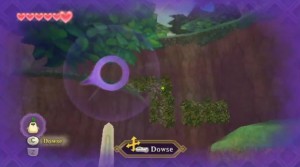 It may seem somewhat strange to suggest that there is a dominant strategy present in exploration, since it is not really a task that is typically thought of as strategic. But in the case of Skyward Sword, there is a clear dominant strategy involved with exploration: dowsing. Now this is a common argument, so bear with me for a moment: while the argument that dowsing makes the game easier is very true, and the counterpoint that players are not forced to use it is equally valid, there is a dimension to this argument that pertains directly to skill scaling. It should go without saying that players develop an increased sense of exploration in the Zelda series: as one plays more and more titles in the series, they become better at finding the secrets littering the overworld and the solutions to puzzles that comprise the dungeons. This is essentially the progression of a player’s exploration skill. I would argue that the presence of dowsing, which amounts basically to a dominant strategy, impairs the progression of a player’s exploration skill.
It may seem somewhat strange to suggest that there is a dominant strategy present in exploration, since it is not really a task that is typically thought of as strategic. But in the case of Skyward Sword, there is a clear dominant strategy involved with exploration: dowsing. Now this is a common argument, so bear with me for a moment: while the argument that dowsing makes the game easier is very true, and the counterpoint that players are not forced to use it is equally valid, there is a dimension to this argument that pertains directly to skill scaling. It should go without saying that players develop an increased sense of exploration in the Zelda series: as one plays more and more titles in the series, they become better at finding the secrets littering the overworld and the solutions to puzzles that comprise the dungeons. This is essentially the progression of a player’s exploration skill. I would argue that the presence of dowsing, which amounts basically to a dominant strategy, impairs the progression of a player’s exploration skill.
Dowsing is a rather simple mechanic which allows the player to point their sword (by aiming with the Wii Remote) at the environment, triggering an indicator when pointing in the direction of a desired object. Though at first limited solely to items pertinent to the main quest, eventually the player is able to dowse for Goddess Cubes, recovery hearts, Gratitude Crystals, and other collectible items within the game. Dowsing has no drawbacks other than the time it takes to dowse: it does not consume a resource, it is not limited in how many things it can find, and it is not limited in its accuracy. It will always lead the player to the item they seek, and it will provide information as accurate as its relative distance to the player in addition to the direction it is in.
Dowsing is a really novel idea and one that would work well as a sub-optimal dominant strategy. For new players to the Zelda series, finding things to progress can at times be a bit of a bottleneck, particularly when they revisit a game after a break and have forgotten what their current task is. Having a way for them to find their direction with ease is a good way to provide them a tool for exploring given their lower skill level. For players experienced with the series, dowsing is unnecessary – they know the way that the series has usually concealed collectibles and quest items, and know what to look for in the overworld. The issue is that for the new players, dowsing’s lack of limitations throughout the game makes it a dominant strategy. There is absolutely no incentive not to dowse, as it costs nothing and yields the same results as not dowsing (and, if we are to assume that the player’s lesser skill level relative to series veterans would mean that they wouldn’t find certain collectibles, it may actually yield greater results).
Had the game not allowed players to douse for optional collectibles such as Goddess Cubes or Gratitude Crystals, the incentive would lie in additional collectibles that increase the player’s power. This incentive would then lead them to search on their own, free of dowsing, and find these collectibles based on their own skill. But as the player begins to become familiar enough with the series’ ways of hiding collectibles and quest items – just as all players become familiar with these techniques of the developers through normal play – the game unlocks further dowsing options. This removes the incentive, as now they can acquire all of these things through dowsing. By allowing the “training wheels”, so to speak, to remain on throughout the entire main quest and the side quests, Skyward Sword significantly impairs the skill growth of the rookie player.
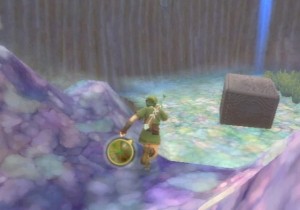 The frustrating thing is that this is an easy fix: dowsing needs to have drawbacks, or needs to be more heavily limited. Something as simple as causing it to consume a resource – perhaps magic power – would be effective, as it would force players to be strategic about when they use dowsing in order to point them to objectives, as well as forcing them to explore on their own at times. Dowsing could be a feature that must be unlocked or purchased with rupees – the ability to dowse for main quest objectives could require that the player complete an additional task, forcing them to weigh the benefits of dowsing with the difficulty of the task required and the difficulty of acquiring the objectives without dowsing. Anything that makes dowsing somehow limited in a way that forces players to make conscious decisions that may favor non-dowsing options would go a long way toward improving the skill scaling of exploration in Skyward Sword.
The frustrating thing is that this is an easy fix: dowsing needs to have drawbacks, or needs to be more heavily limited. Something as simple as causing it to consume a resource – perhaps magic power – would be effective, as it would force players to be strategic about when they use dowsing in order to point them to objectives, as well as forcing them to explore on their own at times. Dowsing could be a feature that must be unlocked or purchased with rupees – the ability to dowse for main quest objectives could require that the player complete an additional task, forcing them to weigh the benefits of dowsing with the difficulty of the task required and the difficulty of acquiring the objectives without dowsing. Anything that makes dowsing somehow limited in a way that forces players to make conscious decisions that may favor non-dowsing options would go a long way toward improving the skill scaling of exploration in Skyward Sword.
Conclusion
As I said at the beginning, I do not think Skyward Sword is a bad or poorly designed game. Rather, I think that Skyward Sword is ultimately unfriendly to rookie players due to its poor skill scaling: rather than giving them early techniques that make them powerful enough to progress without significant difficulty, and then gradually removing those training wheels and forcing them to develop their skills, the game leaves the training wheels on the entire game, and hampers their skill growth with the presence of dominant strategies. These same dominant strategies have the negative effect of making the game at times monotonous for rookies and veterans alike, while punishing players who seek to break the monotony by using non-dominant strategies with more difficult tactics that yield lesser results.
It’s a shame that a game so otherwise well designed suffers from this failure to properly scale to the player’s skill, something that has far reaching implications for the player regardless of their skill level.



